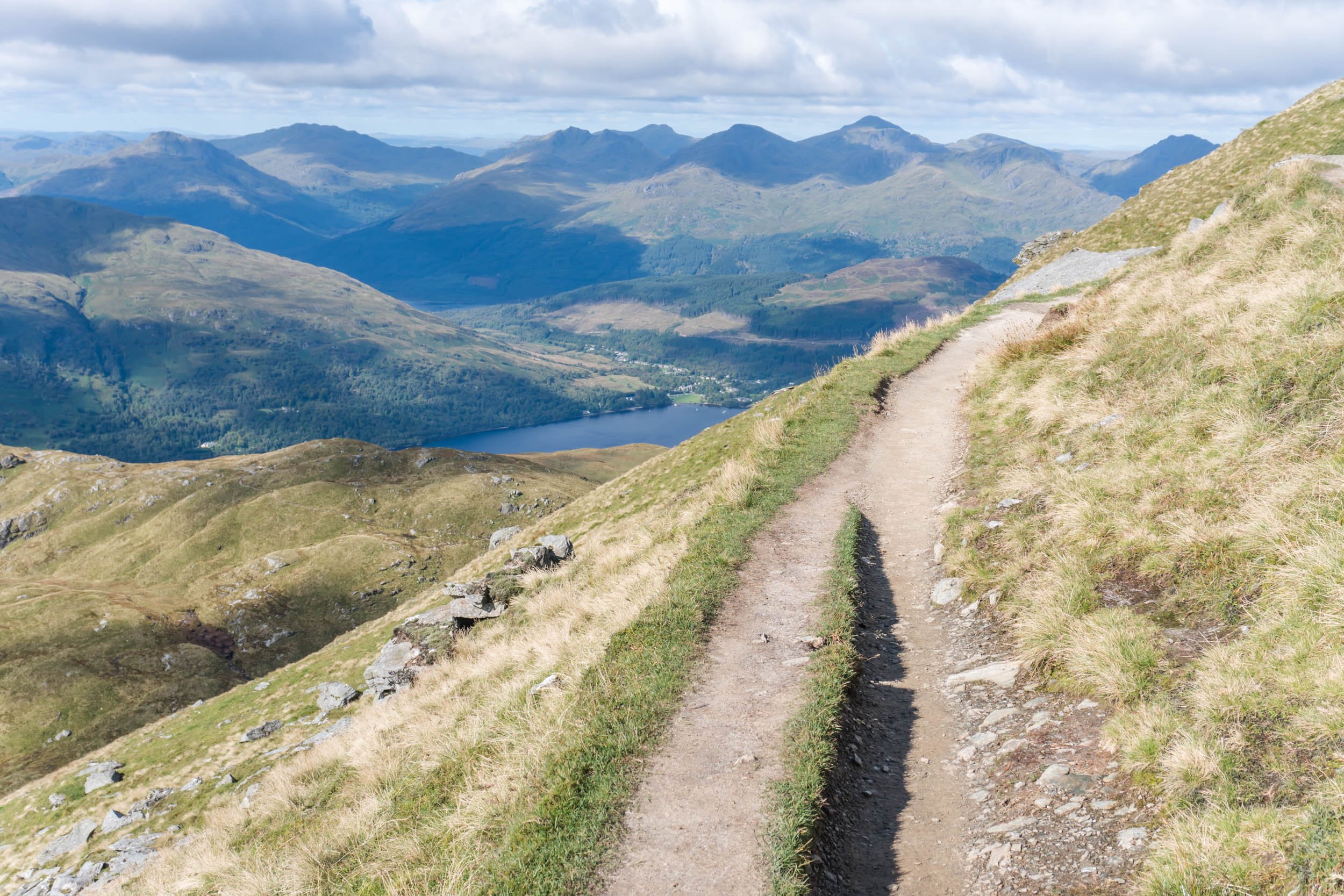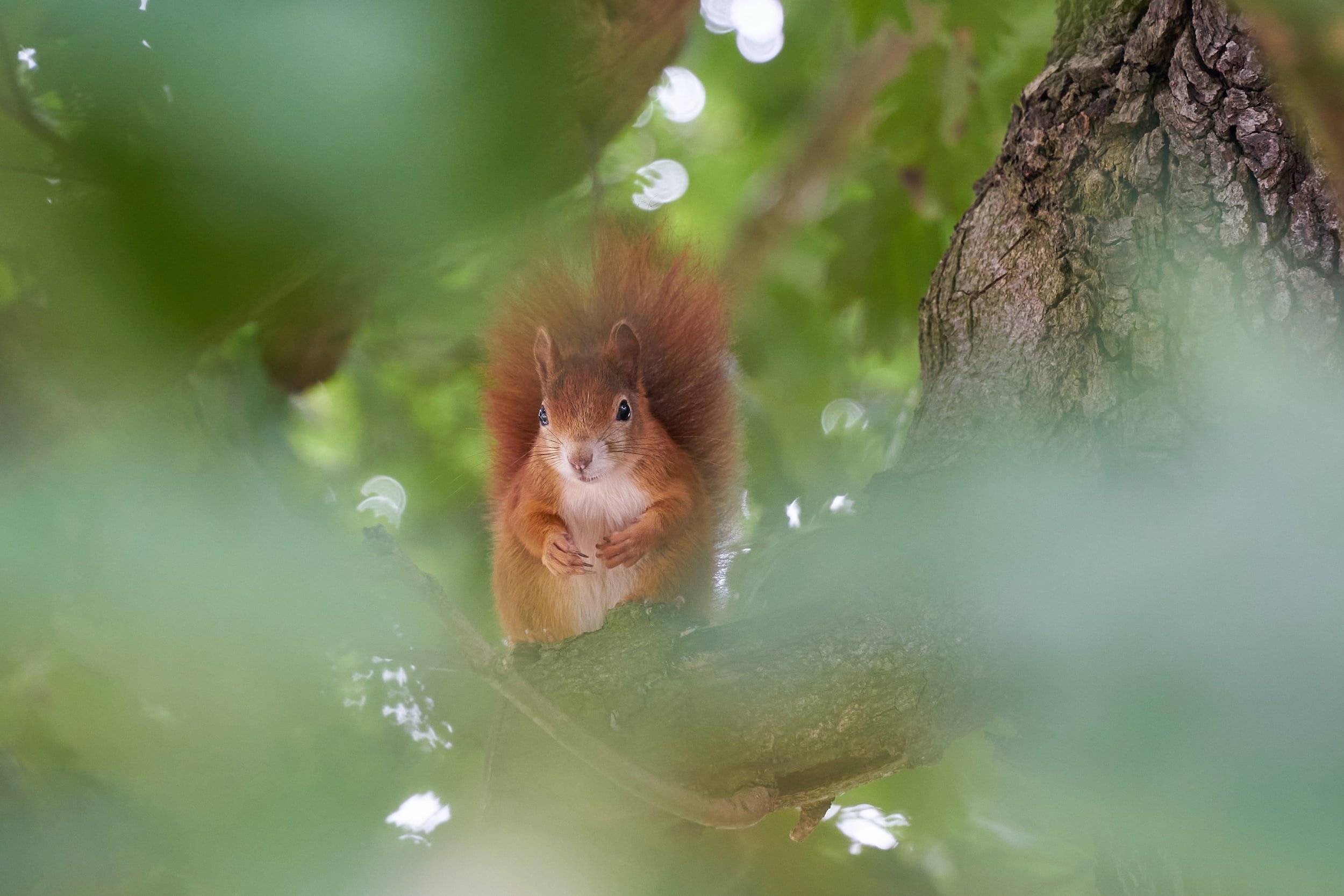
Our History
(View from Ben Lomond)
The story of the Friends
The history of the Friends of Loch Lomond and the Trossachs goes back to 1978. In May of that year, plans were afoot to build a pumped storage hydro-electric scheme on the eastern shores of Loch Lomond.
Its construction would have changed forever the iconic landscape – the very profile of the countryside around Ben Lomond. Known as the Craigroystan Scheme, it would have been characterised by highly visible construction roads, an upper storage reservoir and power lines running across the slopes.
It was this proposal that prompted Mrs Hannah Stirling and her friend Mrs Josephine Colquhoun to ‘do something about it’. The Friends of Loch Lomond idea was born.
A lawyer was instructed to set up a constitution; friends and relatives were rallied. Hannah Stirling wrote to the Glasgow Herald (as it then was) and asked all who were opposed to the scheme to get in touch.
In the autumn of that same year, a packed public meeting was held in Balloch with around 100 people in attendance, and the organisation, by then known as the Friends of Loch Lomond, elected its first Council. The aim was simple: to create a group that would tirelessly voice their support for the preservation of the area’s natural beauty. The Friends very quickly attracted a worldwide membership.
Remarkably, in what was the pre-internet age, some 200,000 people supported the Friends petition against the pumped storage scheme and the proposal was eventually shelved.
But this still left the Friends of Loch Lomond with lots to do and there was a strong desire amongst Trustees and members to be a positive force to protect and promote the special qualities of Loch Lomond!
Soon, the Friends were involved in lobbying for the creation of Scotland’s first National Park; consultations over a variety of planning matters around the loch, as well as taking the lead in a range of practical activities. These included repairing the foreshore wall at Luss, creating a viewpoint at Duck Bay, repairing footpaths at Stoneymollan and Cashel, as well as creating a new footpath from Tarbet to Arrochar, then extending it to Inveruglas via Glen Loy.
The emphasis has always been on conserving and enhancing the area’s natural and cultural heritage – and hence making it easier for visitors to appreciate and enjoy the area’s unique assets
An example of the Friends in action was the successful efforts to safeguard the large site at the southern end of
Loch Lomond, now known as Loch Lomond Shores and West Riverside, for recreation and tourism purposes. The Friends raised funds to employ a Queen’s Counsel to fight the plans to cover this important site with a large private sector housing scheme at a public inquiry. With the support of local Councillors and the Area Tourist Board, this scheme was rejected. Over 1 million visitors a year now enjoy the leisure opportunities available at site.
Another successful campaign was safeguarding the future of blocks of state-owned forestry that were due to be sold off to the private sector. The Friends were prompt in their objections to what were seen as developments likely to further inhibit public access to the countryside. Consequently, the Kilpatrick Hills plantations, along with a mixed wood of high environmental importance near Ross Priory, were taken off the open market facilities developed on this lochside site and it is also home to the main launching facility for water enthusiasts to gain access to the loch in 1993.
Following another vigorous campaign by the Friends in 1984 and the announcement the Forestry Commission was to sell off Ben Lomond, the National Trust for Scotland was encouraged to purchase the mountain with a 100 per cent grant from the Countryside Commission for Scotland.
The Friends also supported the creation of the Ben Lomond National Memorial Park (pictured above). Its emphasis on mixed stands of native trees is part of a managed ‘continuous forestry policy’ that is also creating a visually pleasing and ecologically diverse landscape, appropriate as a monument. The area is dedicated to the thousands of Scots who died in World War II.
More recently the Friends successfully lobbied the National Park Authority and the Scottish Government to protect the special qualities of the Park from the threat of large scale wind turbine developments and consequently there are now more stringent policies for renewable energy projects within the Park boundaries with large scale wind turbines ruled out in the first Park Development Plan
and more emphasis on other forms of more visually acceptable renewable energy schemes such as run off the river hydro and biomass.
Scotland’s first National Park
Following the successful campaign by the Friends and many others, including the Scottish Campaign for National Parks and the Loch Lomond & The Trossachs Joint Committee, that led to the creation of the Loch Lomond and The Trossachs National Park in 2002, the Friends of Loch Lomond expanded its role to cover the entire area of the park and became active right across Loch Lomond, The Trossachs, Breadalbane and the Argyll Forest Park.
The Friends continue to work closely with the Loch Lomond and The Trossachs National Park Authority and other bodies on a range of topics including policy reviews, specific
planning proposals, bye-laws and other aspects of visitor management, while continuing to support initiatives that help people to enjoy the Park through projects such as the Friends Our Park voluntary visitor giving scheme, Young Friends and Celebrating Park People.
Friends Projects
Recent or current projects supported by the Friends include: the production of publications such a comprehensive Park Guide and a booklet with the results of the first ever archaeological survey of Loch Lomond‘s islands; videos and DVDs on local clans and the special qualities of the Park; the Red Squirrel Project with the Cowal Red Squirrel Group; the Three Lochs Way - improvements and signing; Bracklinn Falls, Callander - footpaths and interpretation; the Rob Roy Way - waymarking and information for walkers; Ardroy Outdoor Education Centre (pictured above) – helping secure its future for the enjoyment of thousands of children each year; PS Maid of the Loch – production of an educational information pack – and much more! (Click here for examples)





